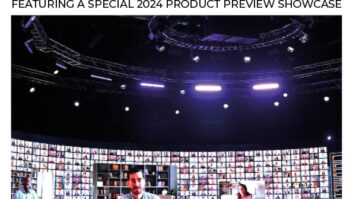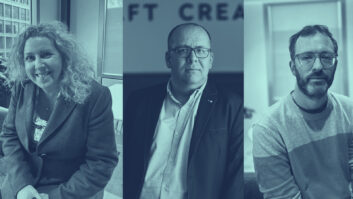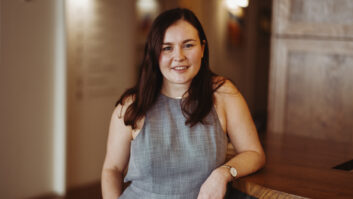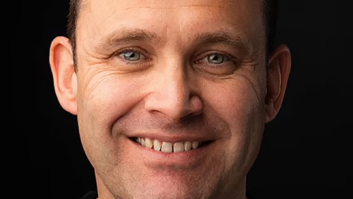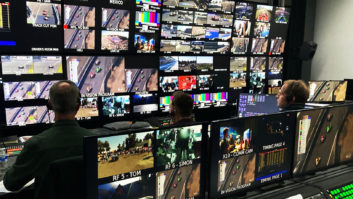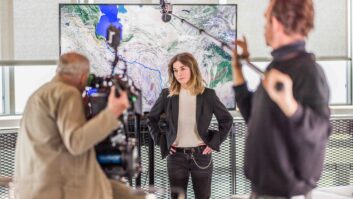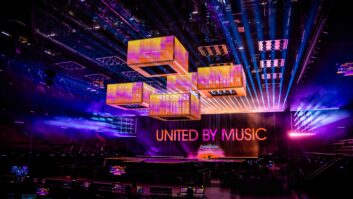White Light once again provided the technical system to run all the visual content on the latest socially distanced series of Sky’s The Russell Howard Hour.
The company provided a system to run all of the content sent to the screens behind throughout the studio. This includes those positioned behind Russell Howard which act as his backdrop and a point of reference for most segments.
The show is filmed at BBC Studioworks, White City, and the server linked into the in-house system allowing the vision mixer to overlay content and graphics on the screens inside the studio. Once the video feeds were sent to the studio’s system, they were then distributed around the studio to feed the screens.
“The content used is based on a main run of the show but changed every week depending on what topics were being discussed,” said White Light’s key account manager for broadcast, Ian Charlampowicz. “As we live in a world where so much is changing day in, day out, we had to utilise a system that would respond quickly to any last-minute changes. As such, on the day of recording, our team, led by Lee Woodger and Alex Loftie, had to programme in new bits of content for that day’s show which often included different guest introductions, updating the topic images and, from time to time, adding an entirely new section.
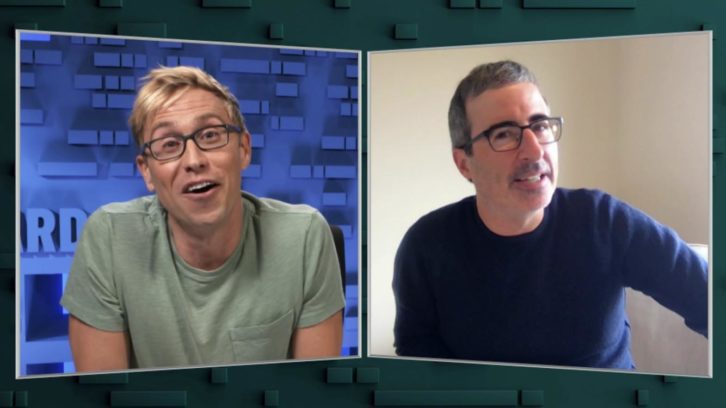
“As guests from outside of the UK could not travel due to the current restrictions, Russell conducted a number of his interviews virtually. The main studio space itself seemed too large for this so a specific room was created in which Russell could virtually interview guests. This was essentially an office which featured set walls that replicated the aesthetic of the main show. Our role was to supply the lighting which complimented the sets as well as create certain affects such as shadows and colouring,” adds Charlampowicz.
